Best Luxury Accent Lighting for Every Room
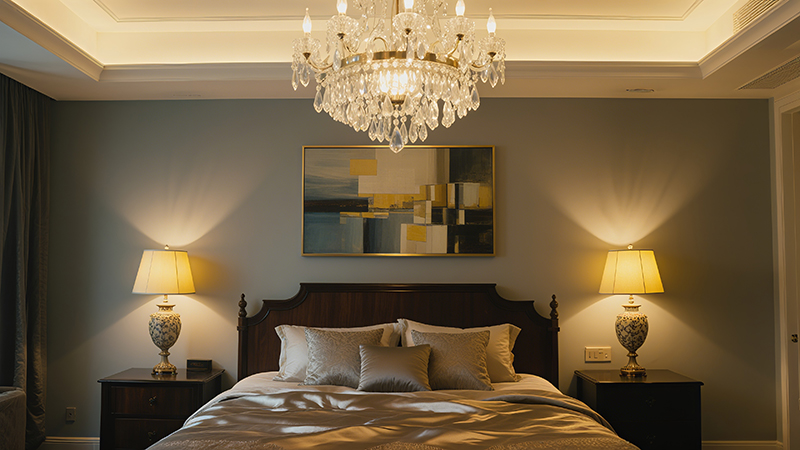
Contents
- Preface
- Overview
- 1. Start with a Plan: Know Your Room’s Purpose
- 2. Layer Your Lighting
- 3. Choose the Right Fixtures
- 4. Play with Light Temperature
- 5. Use Dimmers for Flexibility
- 6. Highlight Your Favourite Features
- 7. Don’t Forget About Outdoor Spaces
- 8. Invest in Smart Lighting
- 9. Mix and Match Styles
- 10. Don’t Overlook the Details
- Conclusion
Preface
Lighting is the unsung hero of interior design. It does more than illuminate spaces—it shapes emotions, defines functionality, and elevates aesthetics. In the realm of luxury living, accent lighting transcends mere practicality; it becomes a language that speaks to personal style, transforming ordinary rooms into curated sanctuaries. Whether you’re aiming to highlight a priceless artwork, craft a serene bedroom retreat, or turn a patio into an evening oasis, the right luxury accent lighting is the key. This guide delves into the nuances of selecting, layering, and perfecting lighting to suit every corner of your home, blending artistry with intent to create spaces that feel both lavish and lived-in.
Overview
Luxury accent lighting is a harmonious blend of science and creativity. It involves understanding how light interacts with space, how different fixtures complement architectural details, and how varying temperatures and intensities can shift moods. From the warm glow of a bedside lamp to the precise beam of a track light highlighting a gallery wall, every element serves a purpose. This guide breaks down the process into actionable steps: starting with a room-specific plan, layering light sources, choosing fixtures that align with your style, playing with color temperatures, integrating dimmers, highlighting focal points, extending design to outdoor spaces, embracing smart technology, mixing styles for depth, and refining details. By mastering these elements, you’ll transform your home into a space that balances opulence with comfort, making every moment at home feel extraordinary.
1. Start with a Plan: Know Your Room’s Purpose
Before selecting a single fixture, map out how each room functions. A one-size-fits-all approach fails to account for the unique rhythms of daily life—what works for a bustling kitchen won’t suit a tranquil bedroom.
Living Room: The Heart of the Home
The living room serves multiple roles: entertaining guests, relaxing with a book, or binge-watching a show.
- Gathering Zones: Use floor lamps with soft diffusers near sofas to create a welcoming glow for conversations.
- Entertainment Areas: Pair recessed ambient lights with adjustable table lamps to reduce glare on screens.
- Focal Points: If you have a fireplace or statement art, flank it with wall sconces to draw the eye.
Bedroom: A Sanctuary for Rest
The bedroom demands lighting that transitions from functional (morning routines) to soothing (nighttime unwinding).
- Sleep-Friendly Lighting: Install dimmable ceiling fixtures with warm white bulbs to mimic sunset hues.
- Bedside Convenience: Opt for swing-arm wall lamps (to save nightstand space) or table lamps with fabric shades for gentle reading light.
- Dressing Nooks: Add small, focused pendant lights above vanities or dressers for clear, shadow-free visibility.
Kitchen: Where Function Meets Style
The kitchen is a workspace, so precision is key—but that doesn’t mean sacrificing elegance.
- Task Zones: Under-cabinet LED strips (3000K-4000K) illuminate countertops for chopping and cooking.
- Island Statements: Hang pendant lights (brass or matte black finishes) 30-36 inches above the island to define the space and add warmth.
- Ambient Balance: Pair with recessed ceiling lights to avoid harsh shadows in corners.
Bathroom: A Blend of Practicality and Luxury
Bathrooms require bright, even lighting for grooming while maintaining a spa-like feel.
- Vanity Perfection: Mount wall sconces on either side of the mirror (not above) to eliminate facial shadows.
- Shower Safety: Use moisture-resistant recessed lights with frosted glass for soft, consistent illumination.
- Evening Ambiance: Add a small chandelier or dimmable ceiling light to transition from morning rush to evening relaxation.
2. Layer Your Lighting
Relying on a single ceiling light leaves spaces feeling flat. Layering three types of light—ambient, task, and accent—adds depth, ensuring every corner feels intentional.
Ambient Lighting: The Foundation
This is the base layer that fills the room with soft, general illumination.
- Fixtures to Consider
- Chandeliers: For grand spaces like dining rooms, choose a chandelier with multiple bulbs and a diffused shade to cast even light.
- Flush-Mount Ceiling Lights: Ideal for low ceilings in hallways or bedrooms, offering subtle, unobtrusive glow.
- Recessed Can Lights: Spaced evenly, they provide a clean, modern base layer without cluttering the ceiling.
Task Lighting: Precision for Activity
Task lighting targets specific areas where focused brightness is needed.
- Key Applications
- Reading: Floor lamps with adjustable arms (positioned over a favorite armchair) or clip-on lamps for bookshelves.
- Cooking: Under-cabinet LED strips with high Color rendering index (CRI) to accurately show food colors.
- Home Offices: Desk lamps with directional shades to illuminate work surfaces without glare on screens.
Accent Lighting: The Focal Point Enhancer
This layer draws attention to what matters most—art, architecture, or decor.
- Strategic Options
- Picture Lights: Mounted 6-12 inches above artwork, with bulbs angled 30 degrees to avoid glare.
- Track Lighting: Adjustable heads that can shift to highlight rotating gallery walls or decorative objects.
- LED Strip Lights: Hidden under staircases, behind headboards, or along bookshelf edges for a subtle, modern glow.
3. Choose the Right Fixtures
Fixtures are more than light sources—they’re design statements. The right piece can elevate a room; the wrong one can disrupt its flow.
Match the Style of Your Space
Fixtures should complement your home’s aesthetic, not compete with it.
- Modern Spaces: Opt for sleek, geometric designs—think matte black pendant lights with clean lines, or floor lamps with metallic finishes and frosted glass.
- Traditional Homes: Embrace ornate details: crystal chandeliers, brass wall sconces with curved arms, or table lamps with fabric shades and carved bases.
- Bohemian Interiors: Mix textures like woven rattan pendant lights, macramé lamp shades, or vintage brass fixtures for an eclectic vibe.
Consider Scale and Proportion
A fixture that’s too large or small throws off a room’s balance.
- General Guidelines
- For chandeliers: In dining rooms, the diameter should be 12 inches less than the width of the table (e.g., a 48-inch table pairs with a 36-inch chandelier).
- For floor lamps: In living rooms, the shade should sit at eye level when seated (around 60-66 inches tall).
- For pendant lights: Over kitchen islands, leave 30-36 inches between the bottom of the fixture and the countertop.
Select Finishes That Tie the Room Together
The finish of a fixture can harmonize with other elements like hardware, furniture, or wall colors.
- Popular Finishes and Pairings
- Brushed Nickel: Works with cool tones (grays, blues) and modern or transitional styles.
- Matte Black: Adds contrast in minimalist spaces or complements industrial designs.
- Polished Brass: Warms up neutral rooms and pairs beautifully with wooden furniture or velvet textiles.
4. Play with Light Temperature
Light temperature, measured in Kelvins (K), dictates whether a space feels cozy or energizing. Understanding how to use each range transforms ambiance.
Warm White (2000K-3000K): Comfort and Relaxation
This golden, sunset-like glow is ideal for spaces meant for unwinding.
- Best Rooms: Living rooms, bedrooms, dining rooms, and home theaters.
- Why It Works: Stimulates the production of melatonin, promoting relaxation—perfect for evenings.
- Fixture Pairings: Table lamps with fabric shades, wall sconces with amber-tinted glass, or dimmable chandeliers.
Cool White (3100K-4500K): Focus and Productivity
This bright, neutral tone mimics early morning light, boosting alertness.
- Best Rooms: Kitchens, home offices, bathrooms, and laundry rooms.
- Why It Works: Enhances focus and visibility, making tasks like cooking or reading easier.
- Fixture Pairings: Under-cabinet LED strips, task lamps with clear glass shades, or recessed lights with high CRI.
Daylight (4600K-6500K): Clarity for Precision Tasks
This crisp, blue-tinged light replicates midday sun, ideal for detailed work.
- Best Spaces: Workshops, garages, craft rooms, or home gyms.
- Why It Works: Reduces eye strain during tasks requiring precision, like woodworking or makeup application.
- Fixture Pairings: Adjustable track lights, overhead fluorescent fixtures (with diffusers to soften harshness), or LED shop lights.
Transitioning Between Zones
- Create a cohesive flow by gradually shifting temperatures. For example:
- Move from 2700K in the living room to 3500K in the kitchen, then to 4000K in the home office.
- Use dimmers to warm up daylight fixtures in the evening (e.g., dimming a 5000K garage light to 3000K for evening use).
5. Use Dimmers for Flexibility
Dimmers are a luxury lighting secret—they turn static spaces into adaptable ones, letting you adjust mood with a simple slide or voice command.
Benefits Beyond Ambiance
Dimmers offer practical advantages that elevate their value.
- Energy Efficiency: Reducing brightness by 50% cuts energy use by 40-50% and extends bulb life by 10-20 times.
- Versatility for Occasions: Bright enough for a family game night, dim enough for a romantic dinner, or soft for a quiet evening with a book.
- Reduced Glare: Lowering intensity minimizes harsh light on screens, artwork, or reflective surfaces.
Types of Dimmers to Consider
- Traditional Dimmer Switches: Knob or slider models that replace standard light switches—ideal for hardwired fixtures.
- Smart Dimmers: Controlled via apps or voice assistants (Alexa, Google Home), allowing remote adjustment and scheduling.
- Plug-In Dimmers: Perfect for table lamps or floor lamps—no wiring required, simply plug into an outlet.
Fixture Compatibility
- Not all bulbs work with dimmers, so check compatibility:
- LED bulbs: Look for “dimmable” labels (non-dimmable LEDs may flicker).
- Incandescent bulbs: Work with most dimmers but are less energy-efficient.
- Halogen bulbs: Dimmable but generate more heat than LEDs.
6. Highlight Your Favourite Features
Accent lighting’s true power lies in drawing attention to what makes your home unique—whether it’s a vintage mirror, a built-in bookshelf, or a stunning fireplace.
Artwork and Wall Decor
Proper lighting can make art feel like a gallery piece.
- Picture Lights: Mounted directly above or beside the artwork, with adjustable brightness to match the piece’s tone (e.g., softer light for watercolors, brighter for oil paintings).
- Track Lighting with Narrow Beams: Use 15-25 degree beam angles to focus on individual pieces without spilling light onto surrounding walls.
- Backlighting: For translucent art (like stained glass), place LED strips behind the piece to create a glowing silhouette.
Architectural Details
Highlight the bones of your home, from crown molding to exposed beams.
- Cove Lighting: LED strips hidden in ceiling coves to cast a soft glow up the walls, emphasizing height and elegance.
- Recessed Lights in Alcoves: Illuminate built-in niches holding sculptures or vases with small, directional recessed fixtures.
- Sconces on Fireplaces: Pair symmetrically on either side of a fireplace to frame the mantel and highlight stone or tile textures.
Furniture and Functional Nooks
Turn everyday pieces into focal points.
- Under-Cabinet Lighting: In libraries or home offices, LED strips under upper bookshelves highlight book spines and create a warm, inviting glow.
- Floor Lamps Behind Couches: Angle the shade to wash light over a textured wall or a statement sofa, adding depth to seating areas.
- Pendant Lights Over Accent Tables: A small, decorative pendant (e.g., a glass orb) above a side table draws attention to a unique lamp or floral arrangement.
7. Don’t Forget About Outdoor Spaces
Luxury lighting shouldn’t stop at the front door. Outdoor spaces deserve the same attention, turning patios, gardens, and pathways into extensions of your interior design.
Patios and Dining Areas
Create an outdoor room that feels as polished as your living room.
- String Lights: Drape warm white (2700K) string lights above the patio—use weatherproof, shatterproof bulbs for durability.
- Pendant Lights: Hang waterproof pendants (brass or copper finishes work well) above outdoor dining tables, 30-36 inches above the surface.
- Floor Lamps with weighted Bases: Add ambient light near outdoor sofas for evening conversations.
Gardens and Landscaping
Highlight nature’s beauty after dark.
- Spotlights for Trees and Shrubs: Place 10-15 feet from the base, angled upward to showcase trunks or foliage (use 30-40 degree beams for larger trees).
- In-Ground Well Lights: Recessed into flower beds to illuminate pathways or border edges without tripping hazards.
- Floating Lights: Submersible LED orbs in ponds or birdbaths add a magical, reflective glow.
Entryways and Pathways
Welcome guests with elegance and safety.
- Path Lights: Low-profile, weatherproof fixtures (brass or stone finishes) spaced 2-3 feet apart to guide footsteps without glare.
- Wall Sconces by the Door: Pair with a coordinating pendant above the entry for a cohesive look—use motion sensors for added security.
- Step Lights: Recessed into stair risers to illuminate each step, combining safety with subtle ambiance.
8. Invest in Smart Lighting
Smart lighting blends luxury with convenience, putting control of your home’s glow at your fingertips—whether you’re on the couch or across the globe.
Key Features of Smart Lighting Systems
These tools transform how you interact with light.
- Remote Control: Adjust brightness, color, or temperature via apps (e.g., Philips Hue, Lutron) from your phone.
- Voice Activation: Sync with assistants like Siri or Alexa for hands-free control (“Dim the living room to 30%”).
- Scheduling: Set routines (e.g., “Morning Mode” turns on kitchen and bathroom lights at 7 AM; “Evening Mode” dims bedrooms at 9 PM).
- Color Customization: Some bulbs (e.g., RGB LEDs) offer millions of colors—perfect for holidays, movie nights, or matching decor.
Integration with Home Ecosystems
Smart lighting works with other devices to create seamless experiences:
- Pair with motion sensors to turn on hallway lights when you walk by.
- Sync with smart thermostats to adjust lighting based on room temperature (e.g., warmer light in cooler rooms).
- Connect to security systems—lights can flash or turn on automatically if motion is detected.
Installation Options
Smart lighting fits any home, regardless of wiring:
- Hardwired systems: Replace existing switches with smart dimmers for permanent integration.
- Plug-in smart bulbs: Simply screw into existing fixtures—ideal for renters or easy upgrades.
- Smart hubs: Centralize control for multiple bulbs, ensuring they work together smoothly.
9. Mix and Match Styles
Luxury lighting thrives on contrast—combining different styles, materials, and shapes adds depth, making spaces feel curated rather than cookie-cutter.
Blend Eras for Eclectic Charm
Mixing vintage and modern creates visual interest.
- Example 1: A mid-century modern floor lamp (slim brass base, white globe shade) beside a traditional tufted sofa, balanced by a contemporary track light above a vintage art piece.
- Example 2: A rustic wrought-iron chandelier in a kitchen with sleek, modern pendant lights over the island.
Combine Materials for Texture
Contrasting textures add tactile richness.
- Metal + Wood: A black metal pendant light with a wooden base pairs beautifully with a oak dining table.
- Glass + Fabric: A crystal chandelier above a velvet sofa creates a luxe, layered look.
- Ceramic + Rattan: A hand-painted ceramic table lamp beside a rattan chair adds warmth and texture to a boho living room.
Play with Shapes for Dynamism
Mixing geometric and organic shapes prevents monotony.
- Round + Angular: A circular chandelier in a dining room with square table lamps on sideboards.
- Curved + Linear: A curved arc floor lamp in a living room with straight-edged track lighting.
- Small + Large: A oversized pendant light above a kitchen island balanced by tiny recessed lights in the ceiling.
Tips for Cohesion
To avoid chaos, maintain one unifying element:
- Stick to a consistent finish (e.g., all brass fixtures, even if styles differ).
- Keep color temperatures similar (e.g., warm white throughout, regardless of fixture type).
10. Don’t Overlook the Details
The smallest choices—from bulb type to fixture placement—can make or break a luxury lighting design.
Select the Right Bulbs
Bulbs affect both light quality and longevity.
- LEDs: The gold standard for luxury lighting—energy-efficient (use 75% less energy than incandescents), long-lasting (25,000+ hours), and available in dimmable, warm/cool options.
- CRI (Color Rendering Index): Aim for 90+ CRI in spaces where color accuracy matters (kitchens, dressing rooms) to ensure reds look red, greens look green.
- Wattage: Higher wattage doesn’t mean better light—focus on lumens (brightness) instead. For example, 800 lumens (equivalent to a 60W incandescent) works for most table lamps.
Master Placement
Even the best fixture fails if positioned poorly.
- Wall Sconces: Mount 60-66 inches from the floor (eye level when standing) to avoid casting shadows on faces.
- Pendant Lights Over Tables: Center them over the table, not the room, and hang 30-36 inches above the surface.
- Task Lamps: Position them to the side of reading material or workspaces to avoid casting shadows from your hands.
Test and Adjust
Lighting is personal—experiment until it feels right.
- Take Photos: Use your phone to snap pictures at different times of day; photos often reveal uneven lighting or glare you might miss.
- Swap Bulbs: If a room feels too harsh, try a lower Kelvin bulb; if it’s too dim, increase lumens.
- Rearrange Fixtures: Move a floor lamp closer to a chair, or angle a track light differently—small shifts can have big impacts.
Conclusion
Luxury accent lighting is about intention—every fixture, bulb, and dimmer switch should work together to reflect your style and enhance how you live. By starting with a room-specific plan, layering light sources, choosing fixtures that complement your space, playing with temperatures, and embracing flexibility through dimmers and smart technology, you’ll create a home that feels both luxurious and uniquely yours. Remember, the best lighting isn’t just seen—it’s felt: the warmth of a well-placed lamp on a cold evening, the soft glow highlighting a favorite painting, or the convenience of adjusting lights from your phone as you walk in the door. With these tools, your home will evolve from a collection of rooms into a sanctuary where every corner tells a story—bright, beautiful, and entirely yours.


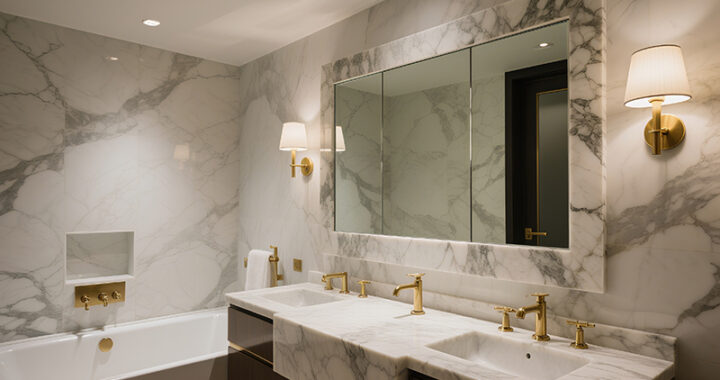 Best Luxury Bathroom Mirrors for a Stylish Touch
Best Luxury Bathroom Mirrors for a Stylish Touch 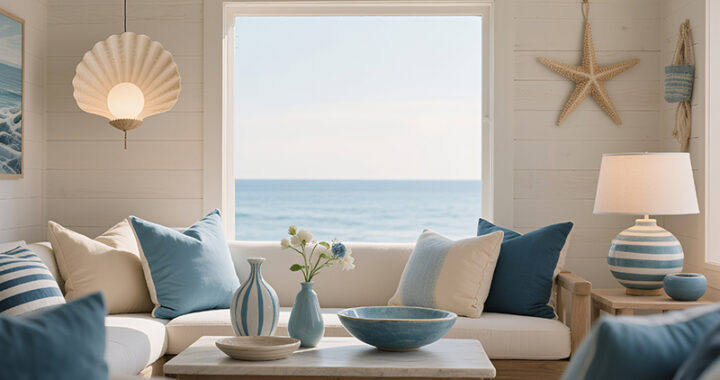 Luxury Coastal Home Decor Ideas: Elevate Your Beach House with Timeless Elegance
Luxury Coastal Home Decor Ideas: Elevate Your Beach House with Timeless Elegance 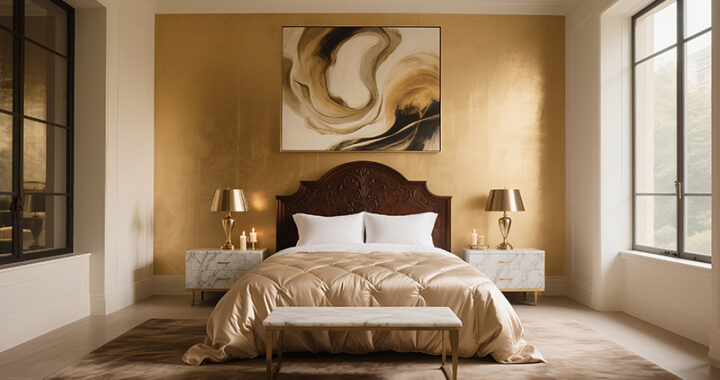 Home Decor Ideas to Make Your Home Feel Like a Luxury Hotel
Home Decor Ideas to Make Your Home Feel Like a Luxury Hotel 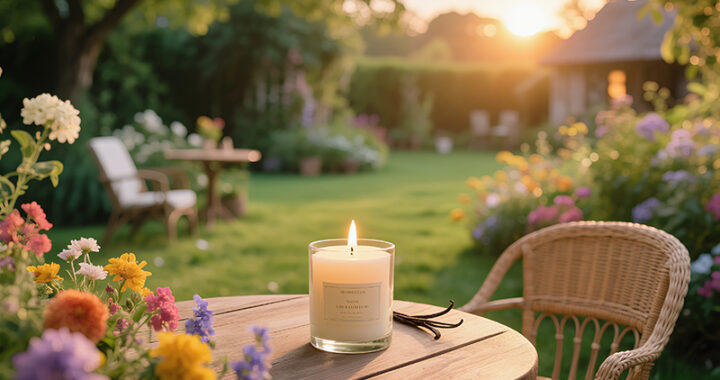 Best Luxury Candles for a Cozy and Elegant Home
Best Luxury Candles for a Cozy and Elegant Home 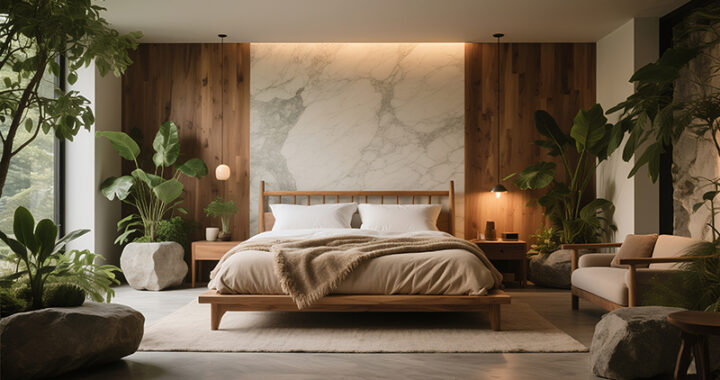 Best Luxury Bed Frames for a Stylish Bedroom
Best Luxury Bed Frames for a Stylish Bedroom 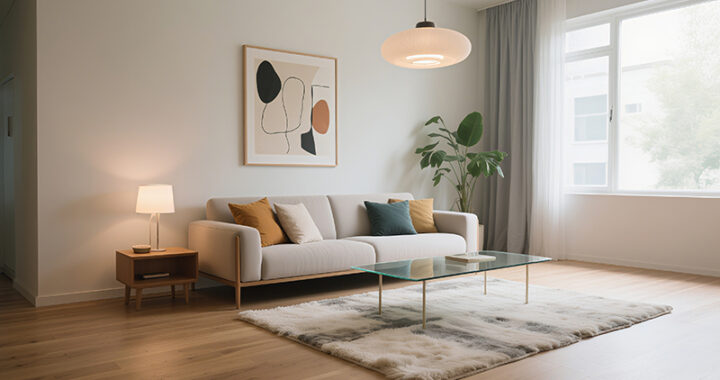 Affordable Home Decor Ideas That Will Transform Your Space
Affordable Home Decor Ideas That Will Transform Your Space